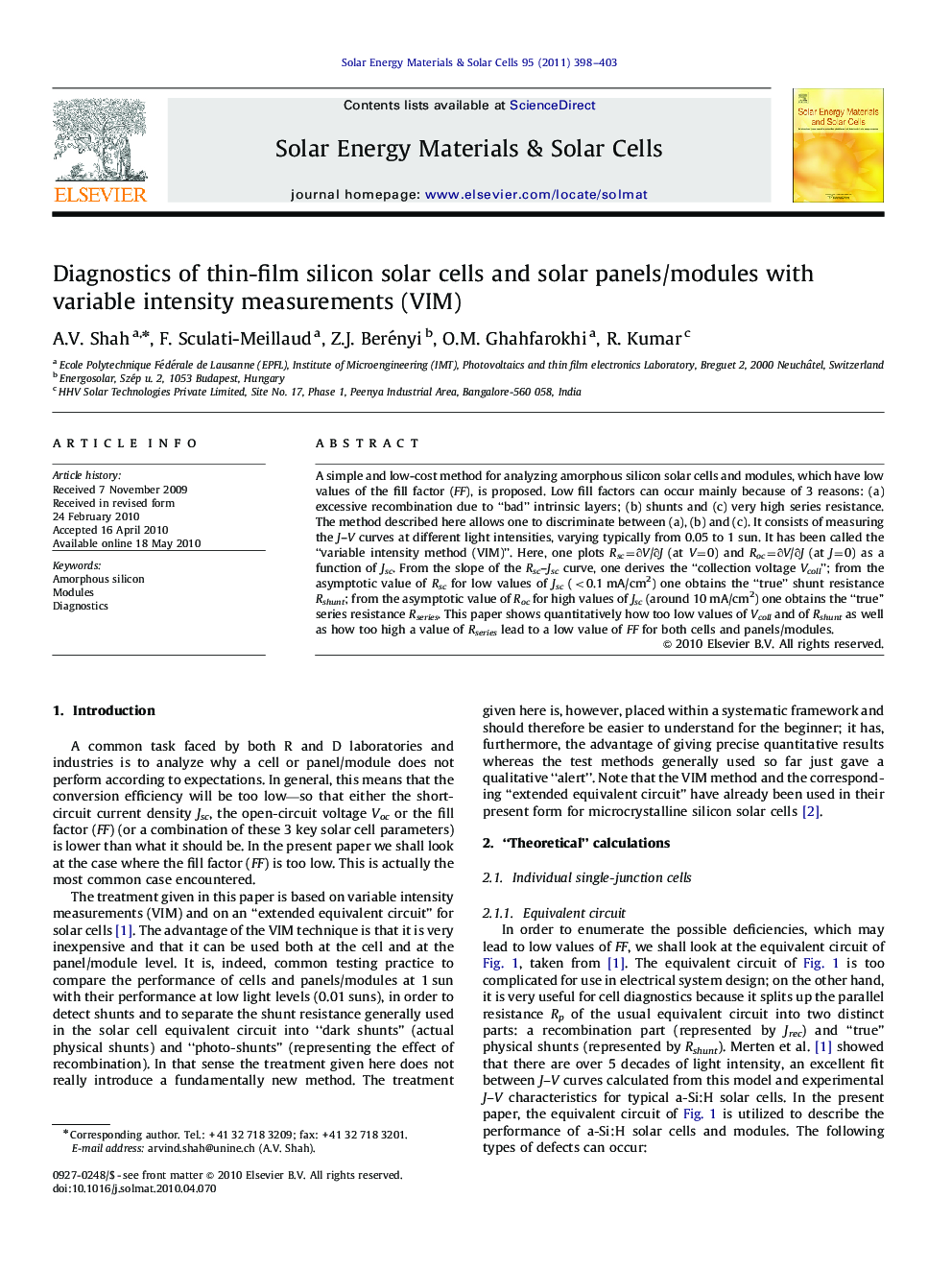| کد مقاله | کد نشریه | سال انتشار | مقاله انگلیسی | نسخه تمام متن |
|---|---|---|---|---|
| 79197 | 49349 | 2011 | 6 صفحه PDF | دانلود رایگان |

A simple and low-cost method for analyzing amorphous silicon solar cells and modules, which have low values of the fill factor (FF), is proposed. Low fill factors can occur mainly because of 3 reasons: (a) excessive recombination due to “bad” intrinsic layers; (b) shunts and (c) very high series resistance. The method described here allows one to discriminate between (a), (b) and (c). It consists of measuring the J–V curves at different light intensities, varying typically from 0.05 to 1 sun. It has been called the “variable intensity method (VIM)”. Here, one plots Rsc=∂V/∂J (at V=0) and Roc=∂V/∂J (at J=0) as a function of Jsc. From the slope of the Rsc–Jsc curve, one derives the “collection voltage Vcoll”; from the asymptotic value of Rsc for low values of Jsc (<0.1 mA/cm2) one obtains the “true” shunt resistance Rshunt; from the asymptotic value of Roc for high values of Jsc (around 10 mA/cm2) one obtains the “true” series resistance Rseries. This paper shows quantitatively how too low values of Vcoll and of Rshunt as well as how too high a value of Rseries lead to a low value of FF for both cells and panels/modules.
Journal: Solar Energy Materials and Solar Cells - Volume 95, Issue 1, January 2011, Pages 398–403